Syntropia – the materials
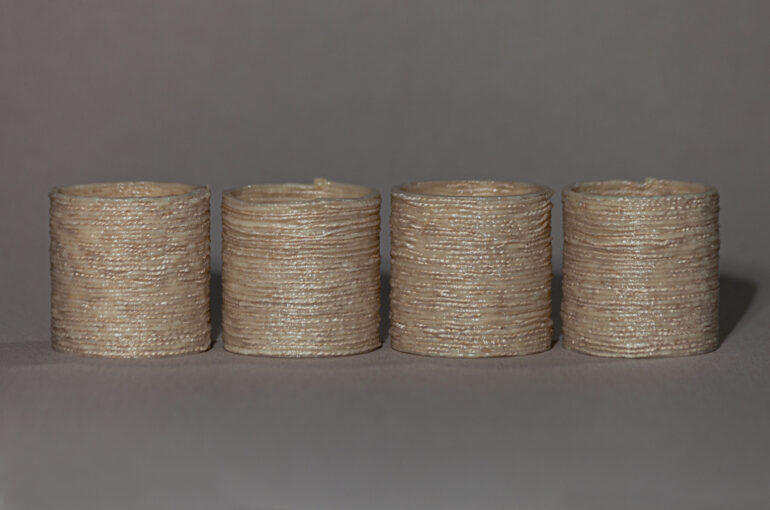
The project Syntropia develops a shoe based on biomaterials which can grow on and be harvested from the same regenerative polycultural field.
To see more about the previous steps of the project see our blog posts:
Syntropia, Researching Syntropia and Thinking Footwear through a Regenerative Polyculture.
After deciding upon a list of plants that we could grow together in our polyculture. We focused on sourcing materials made from these species available on the market, to use for the upper and lining of the shoes and started developing samples.
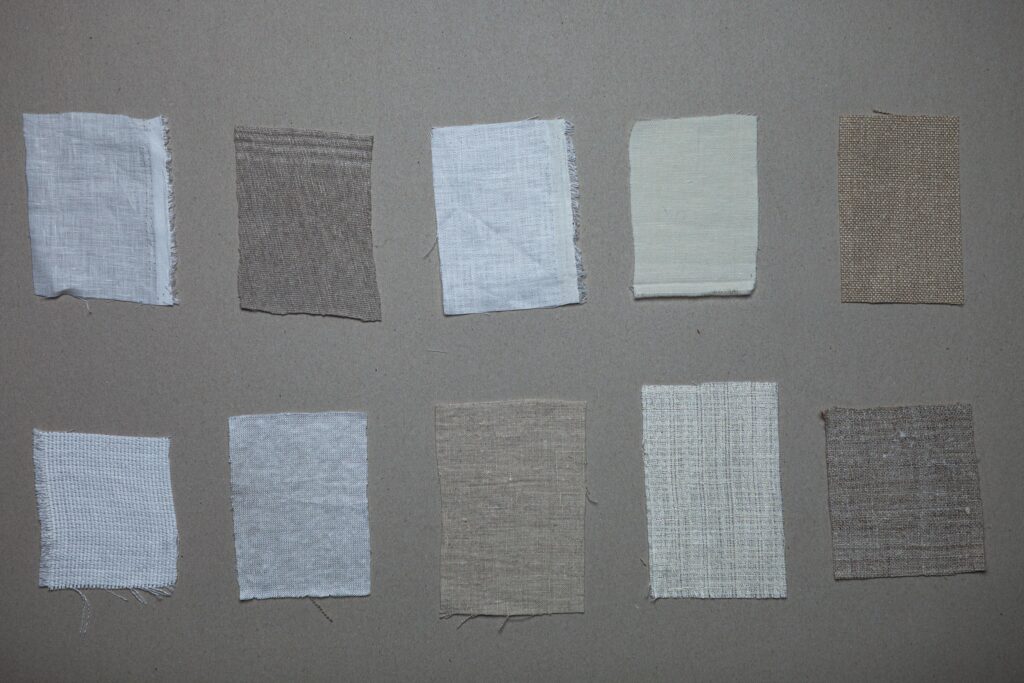
Fabric samples made from hemp and nettle (Image: Elisabeth Handl)
Upper and Lining Development of Material Strategy and Samples
We sourced the materials in 3 variations: fibres, yarns/threads/ropes and finished fabrics. Due to using plants, which are established in the fabric production to different degrees, the possibilities on offer vary greatly.
Hemp, for example, is a fibre that is used more and more in the textile industry and there are a great variety of different products available. It can be found as fibre still to be spun, as yarn, and as fabric and here also in various degrees of processing, from low processed, unbleached and rough, to highly processed, bleached and fine. Nettle on the other hand is a fibre which is just coming back onto the market. Here we could source a fabric handwoven on a loom in Ukraine and a very fine yarn. Spanish broom is only just being researched again in, for example, Italy for its fibre producing quality. Sisal the fibre of the Agave is mostly used for very rough “textiles” such as carpets.
The goal for the creation of the uppers and linings was to show the full potential of all the fibres available to us. This meant also reflecting the different contexts in which they could be made; from handcrafted to highly industrialised/standardised. Next to working on techniques like hand weaving sisal fibres with hemp yarn, which is very craft- based, we were also trying to reflect the potential of materials with fewer present options on the market. They are handwoven now but could also be machinemade later, like the nettle yarn woven with hemp yarn.
Moving from raw material/material to technique to application
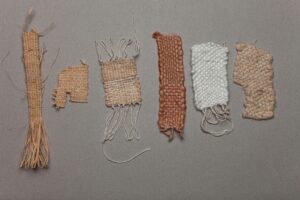
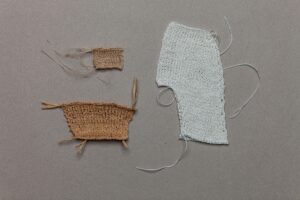
Woven and knitted material samples (Images: Elisabeth Handl)
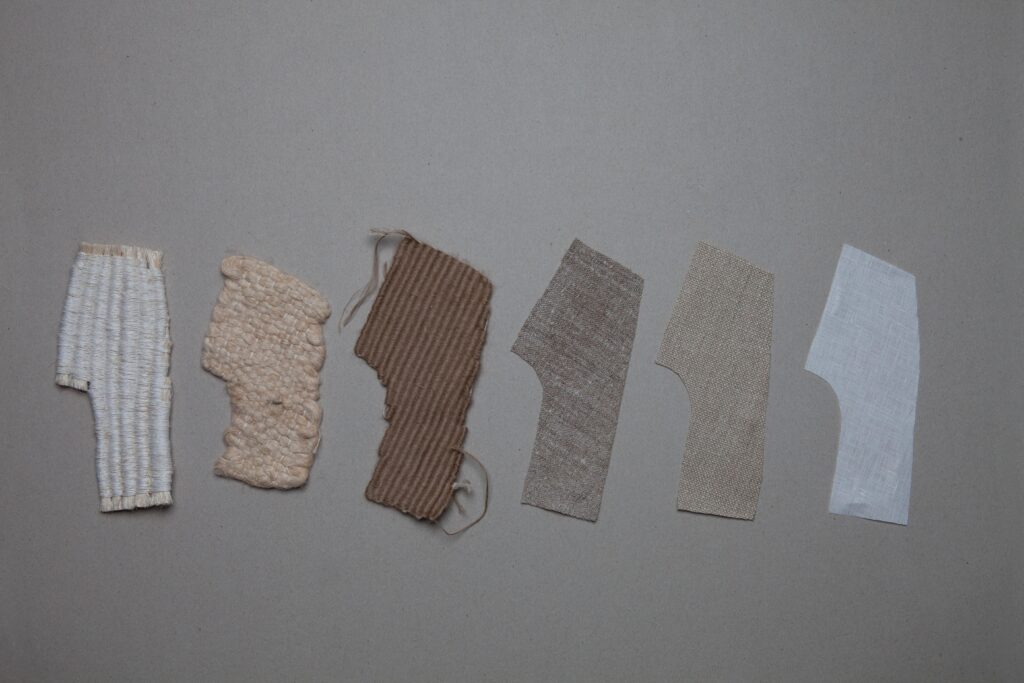
Samples for upper and lining; from handmade to machinemade (Image: Elisabeth Handl)
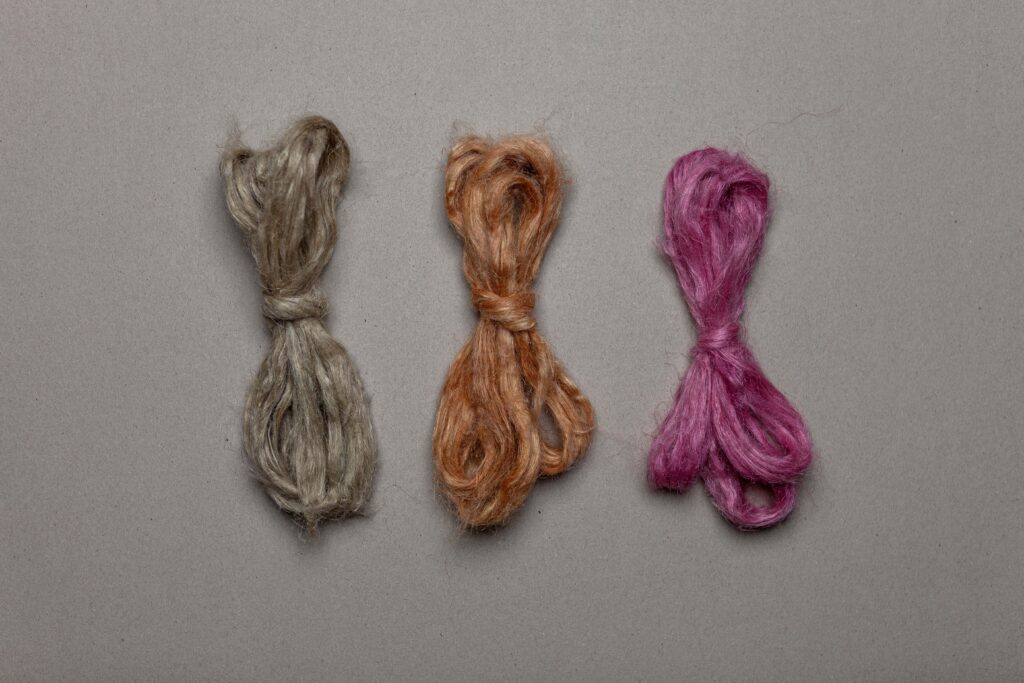
Dying tests made with hemp fibre using nettle, onion and cochineal (Image: Elisabeth Handl)
The filaments
After having successfully chosen the material combinations for the filaments, we received first samples from WoodKplus and started test printing the materials and working on the continuous path printing. We also continued working on the rubber compounds for the outsoles.
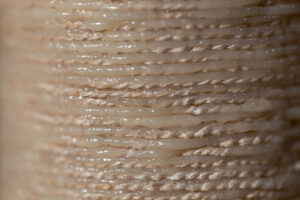
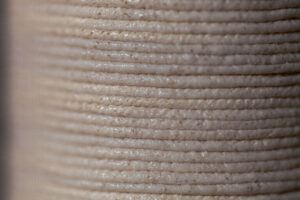
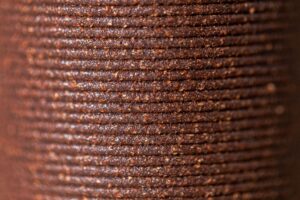
Filament developed with WillowFlex and hemp thread; SoftPLA and cotton thread; WillowFlex and cork dust (Images: Elisabeth Handl)
Sample/Testing Strategy
In order to understand the right strategy for working with the different materials, we chose to follow a step by step strategy. Starting from a one layered print, with very little complexity for basic printing settings to arrive at a dome involving circular printing and overhangs.
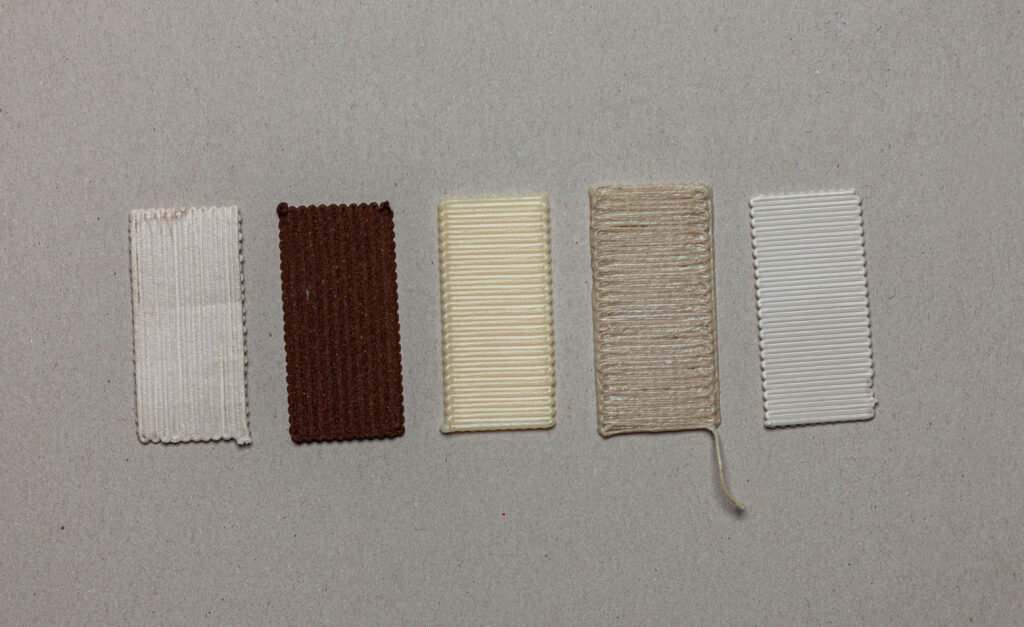
(Image: Elisabeth Handl)
Flat Sample
For the purpose of finding the individual printing settings we defined a flat sample, moving from a one layered print to a two layered sample in 0° and 90° orientation. On a very basic level these samples allowed us to evaluate the temperature, the speed and the layer adhesion of the print.
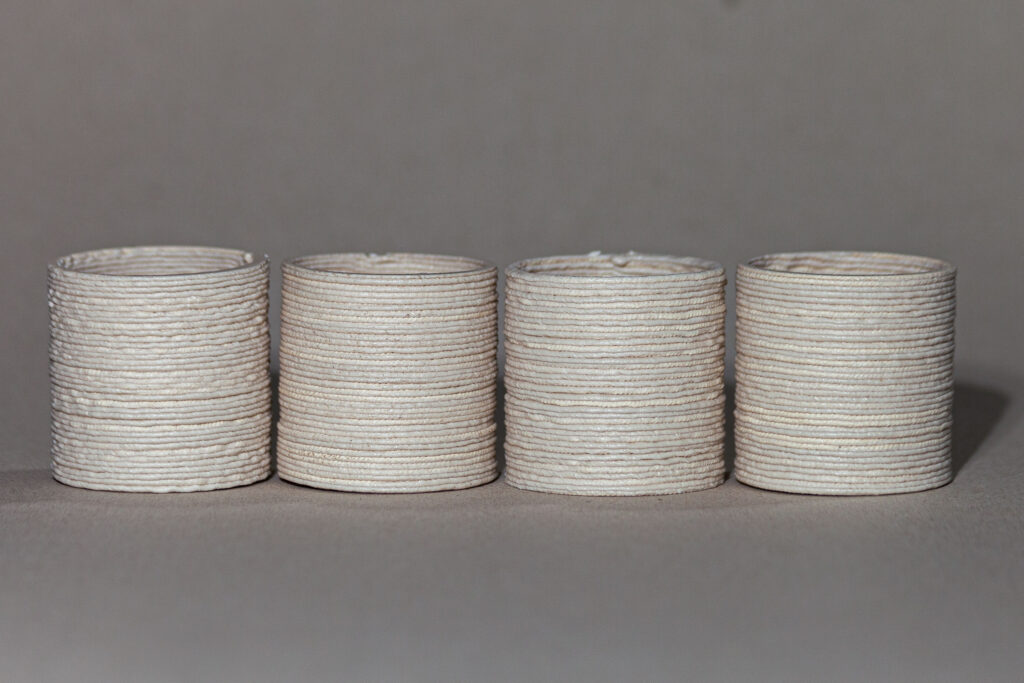
(Image: Elisabeth Handl)
Cylinder
From the flat samples we then moved on to a cylinder with a continuous spiralized outline. Here, the adhesion between the layers being printed is essential for a clean and strong print. In the image you can also see different flow rates being tested. Adjusting the flow can improve layer adhesion and the overall quality of the print. Another aspect here is maintaining a clean print, while moving on to higher layers. The higher the print head moves the lesser the building plate stabilises the print.
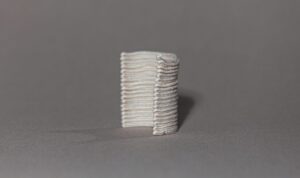
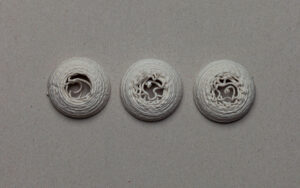
(Images: Elisabeth Handl)
Semi Cylinder and Dome
Moving from the cylinder to the semi cylinder the turning points between the layers are added to the evaluation criteria. The dome allows us to look at the quality and degree of overhang we are able to print without support. The overhang is the amount of a layer that needs to be printed without support of the layer below.
Rubber Composites, Testing and Development
After the initial tests for the rubber and fibre composites, we worked on defining good fibre contents and chose the most promising material combinations. Drawing conclusions from the initial samples we made, we decided to work with short fibres only, as they were producing the most interesting material properties and potential for future development. Another aspect we considered was their availability to us from the projected field.
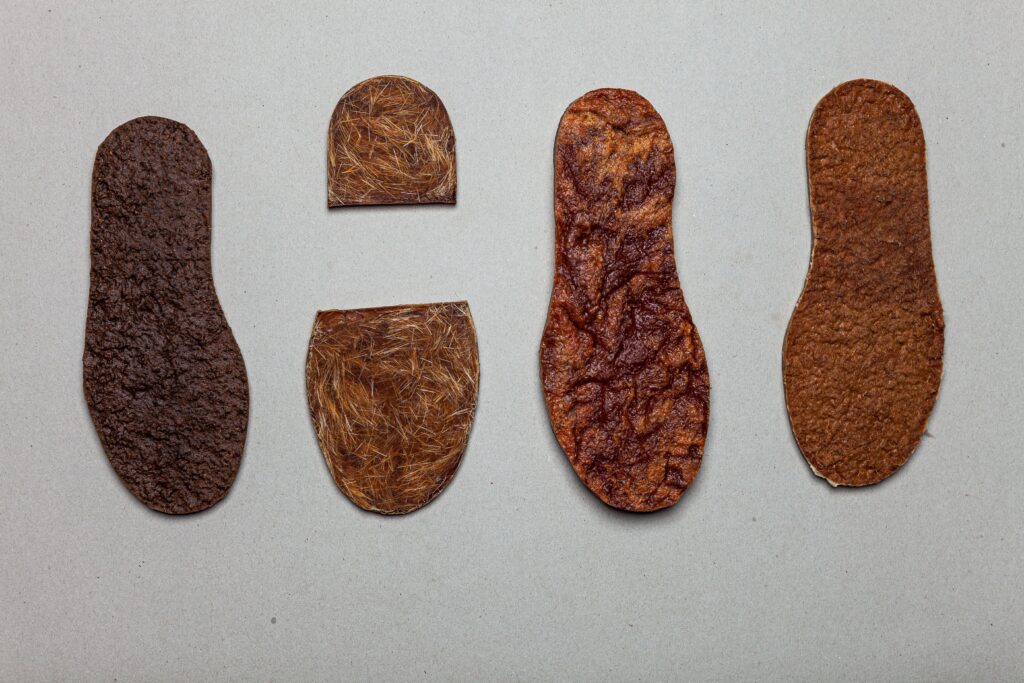
Outsole material tests with rubber and: cork dust, sisal fibre, wool fibre and fibre of the spanish broom (Image: Elisabeth Handl)





